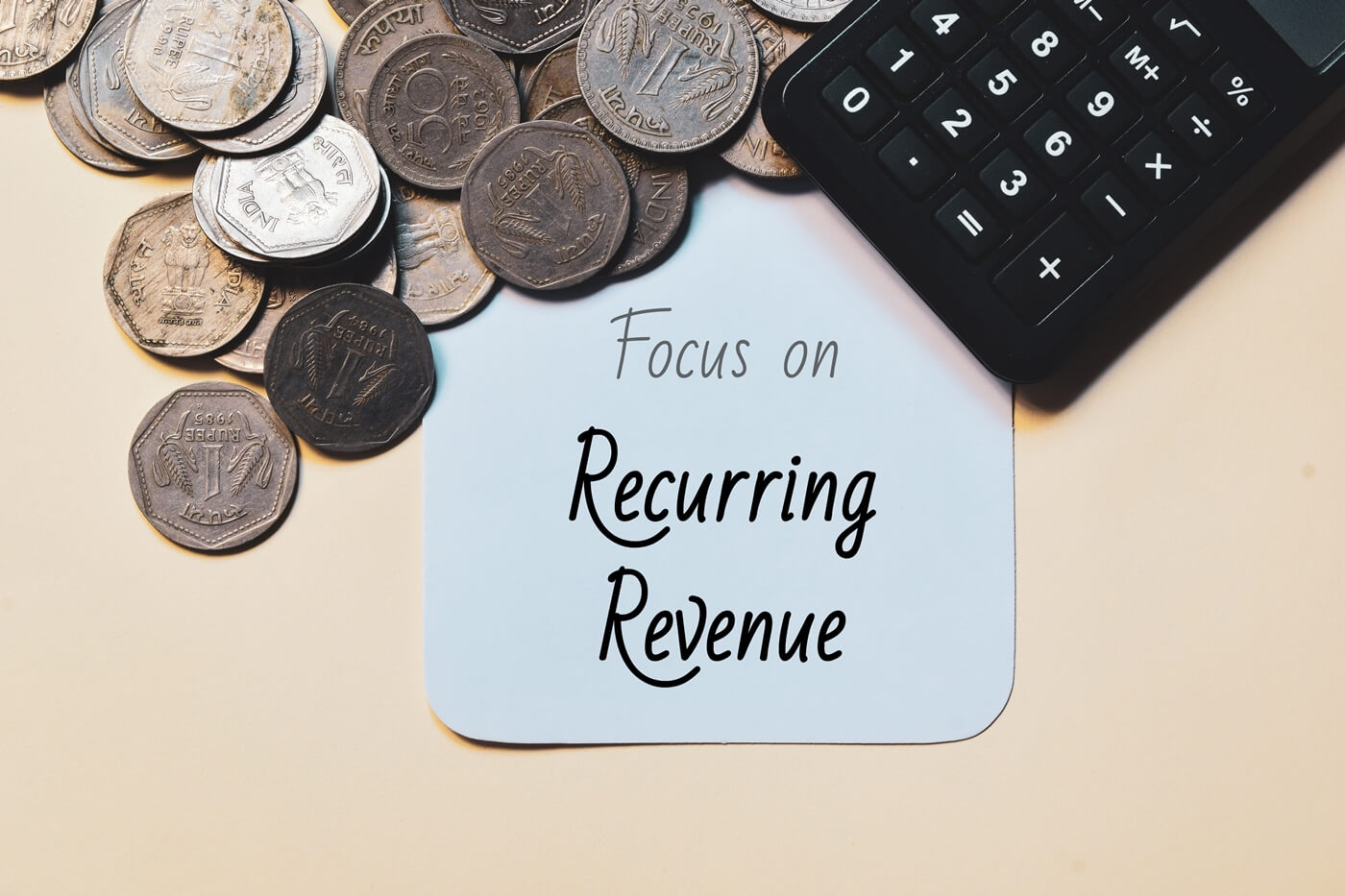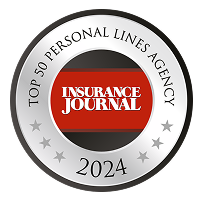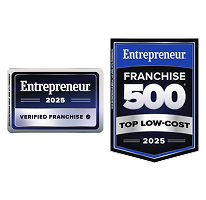When you move forward with your idea to become your own boss and open the doors to your dreams, you will need to decide if you want to sell what amounts to one-off items, like shoes or books, or focus on a product or service that runs on a subscription or renewal basis, such as a gym or a cleaning service.
You might own a business where you draw customers to the door, sell them something, and hope to hear from them again. Your service, selection and price will be important. Maybe they return. Maybe they don’t. No guarantees.
On the other hand, a recurring revenue business — like an insurance franchise or a recurring revenue franchise — will help you build a steady stream of business from your customers. In this type of business, your special connection to each customer becomes very important.
Consider, for instance, owning a coffee shop. A customer comes in the door one morning, buys a cup of dark roast, and you never see them again. Now imagine selling that same customer a monthly coffee subscription plan. They get a better deal on each cup of coffee, and you get a guaranteed monthly payment. Now the customer is motivated by that monthly fee to return to your establishment regularly.
You might also get the occasional add-on sale of cookies, pastries, or a sandwich from that newly subscribed customer. Those are sales you might have never seen if you hadn’t “captured” their business with your subscription plan.
What Is a Recurring Revenue Business?
It’s a business model in which you get your customers to regularly pay for your ongoing products or services rather than selling to them on a “one and done” basis.
As illustrated, one advantage is that you see a stream of sales rather than just one (and the hope that the customer someday returns).
Benefits of the Recurring Revenue Business Model

If you have 100 customers paying $50 each month — or 10,000 customers paying $500 — that’s income you can count on. You’ve got a predictable, stable revenue stream that lets you set your budgets. You can grow your business and borrow against that dependable revenue.
Like the example of the coffee subscription plan, the recurring revenue business model also gives you a chance to upsell and cross-sell to the customer you’ve captured. Bring them in for the coffee, then get them to stay for the breakfast sandwich whose alluring scent they can smell on the grill.
And finally, you have business acquisition cost benefits with a recurring revenue model. Instead of constantly having to pay to find 10 new customers, you have one whose loyalty is already literally paying off repeatedly.
Popular Recurring Revenue Business Models
You see companies adopting this business model on a daily basis. Here are recurring revenue examples within various business categories.
Physical Product Subscriptions
Once again, the coffee house subscription plan comes to mind. Magazines, meal kits, coffee pods, diapers, razor blades, and other beauty and grooming products are just a few examples of the products that can be sold this way.
In each case, the consumer gets a break on price, while the company gets the customer’s loyalty and the reliability of the revenue stream.
Service-Based Recurring Revenue
This model would definitely fit your purposes if you’re a travel agency serving a corporate account with frequent business travel.
Or consider a prime destination for sales professionals: ownership of an insurance agency. If that’s your career path, you get recurring revenue in the way of residual payments simply due to the way that insurance works. It’s an ongoing need for as many years as if your policyholders own a vehicle or a home. If you’re selling life insurance, you might have that customer for decades rather than merely years.
Online Services
Just as the digital era has introduced markets and suppliers unheard of in the pre-Internet world, so too has it brought forth multiple recurring revenue options. Online shoppers today give up their credit card information and subscribe to streaming services, software, and other digital service providers on a “bill me until I tell you to stop” basis.
That method represents maximum convenience for the consumer as well as a predictable income stream for the service provider. Consider, for instance, how Netflix has been able to budget hundreds of millions of dollars for future film and series production on the income steadily and dependably generated by its current subscribers.
Starting a Recurring Revenue Business
The benefits of a recurring revenue business model might be apparent to you, the business owner. But are there recognized advantages in the eyes of your customers or clients? There had better be.
Products or services needed on a regular basis are better candidates for this model than are one-off purchases or those goods or services that are required only infrequently.
If you were a new car dealer, at best, you might see your customer every four or five years. It would make little sense to sell them a monthly plan even for servicing, which would probably ideally be scheduled on a less frequent basis.
It’s a different story if you sell insurance. Coverage must be ongoing to be effective, so putting your policyholders on a monthly, quarterly, or semi-annual plan to maintain coverage makes all kinds of sense.
Once you’ve ascertained that you might have an offering that fits this model, start slowly and strategically to engage an audience. You might launch a pilot program or do beta testing to see if there’s widespread appeal.
What kind of commitment are you seeing with this limited audience? Try various price points to find the one that strikes the ideal balance between your customers’ willingness to pay and your ability to turn a profit (or at least break even in the hope of obtaining additional revenue by upselling and cross-selling to that captured base).
Technology Requirements
You’re going to want to run your recurring revenue system in the most efficient and cost-effective way possible. You’ll need today’s digital automation tools to get the most out of your efforts.
That means setting up reliable online billing and payment solutions. On an ongoing basis, you’ll need subscription management platforms for the ease and convenience of your own team as well as that of your customers.
What happens when customers reach out with questions, complaints, and billing quandaries? You’ll need to have an on-target customer relationship management system, including well-trained customer reps.
In short, make today’s high-tech solutions worthwhile partners in the success of your recurring revenue model.
Financial Planning for Recurring Revenue Businesses
What is your cost in securing a new customer or client? Your customer acquisition cost (CAC) calculations will tell you if you’re on the right track in setting up and operating a recurring revenue business model. If your CAC is high, it can mean it’s well worth your effort to capture and keep customers through this model. But if that cost is low, recurring revenue might not be such a big deal.
Related to your CAC are your lifetime value (LTV) projections for a captured customer. How much is that customer likely to pay on a daily, monthly, or annual basis? In the case of that coffee subscription plan, do the majority of your customers come in virtually every weekday for a morning cup? How often do they spend their lunch hours at your place? Do they buy additional products?
If you were making men’s razor blades available on a subscription plan, how many blades can you send them per month? Four? Five? Calculate the gross revenue and profit on a per-customer basis.
Over time, you’ll also want to calculate your churn rate — the percentage of customers you lose. Why do you lose them? Knowledge is power — and an ever-growing customer base.
Customer Retention and Churn Reduction
In order for your CAC to pay off, you have to be able to keep a significant number of those customers you’ve captured. If your churn rate is high, you’ll end up chasing new customers about as frequently as you would if you had no such model.
That’s why you have to go in-depth in interpreting your churn rate. Why are they leaving? Can you see any patterns? Is there a lot of activity after the introduction of a replacement product? When the cost goes up?
If you notice the churn rate increasing significantly after a price boost, you’ll know this might be a challenge you’ll have to face. Maybe it will involve an ad campaign to draw in fresh customers at the new rate or doing a better job communicating the value of the plan even at the higher price point.
Of course, it’s best to know how your customers feel before they opt out. That’s the value of conducting customer surveys and really listening to their comments and complaints when they reach out to your customer service team. It’s vital to stay current with your customers’ brand loyalty and level of engagement with the plan.
If you do lose customers, have tools and strategies for reeling them back. That’s never an easy mission, but it’s worth the effort. After all, you already have their contact information, and you know they once had an interest in your company. Maybe you can reignite that enthusiasm.
Maintaining your active customer base in a recurring revenue model is an active, ongoing pursuit. You don’t sign them up, get them on your automated billing system, and forget them. You do that at your own peril.
Consider a Proven Recurring Revenue Franchise Model Like Freeway Insurance
If you sell your customers products like coffee or razor blades on a recurring revenue model, it can be pretty easy for them to lose interest and walk away. But car insurance? Homeowners coverage? And the all-important life insurance policy? Those are not “walk away” products.
You’re likely to receive residual payments from your policyholders for years. Perhaps for decades when you sell life insurance.
That’s the genius of the recurring revenue franchise model behind Freeway. And it’s one key reason why hundreds of entrepreneurs coast to coast have bought our franchises and become their own bosses.
Additional reasons include the comprehensive training program, which is especially beneficial for first-time business owners. Then there’s the unsurpassed recognition and acceptance of the Freeway brand and the ongoing support you’ll receive whenever you need it. When you open a Freeway franchise, you’re one step ahead of the competition in that you have customers who trust the brand and already “know” you before you’ve even met.
Call Us for a Free, No-Obligation Chat to Explore Your Opportunities
Want to learn more about owning a Freeway Insurance franchise?
Simply contact a Freeway Franchise representative and have a chat.
Call us at 877-822-3024. You can also give us your contact information, and we’ll reach out to you.
However we connect, you’ll learn all about the many advantages of advancing your career with one of the best recurring revenue businesses on the market today.



